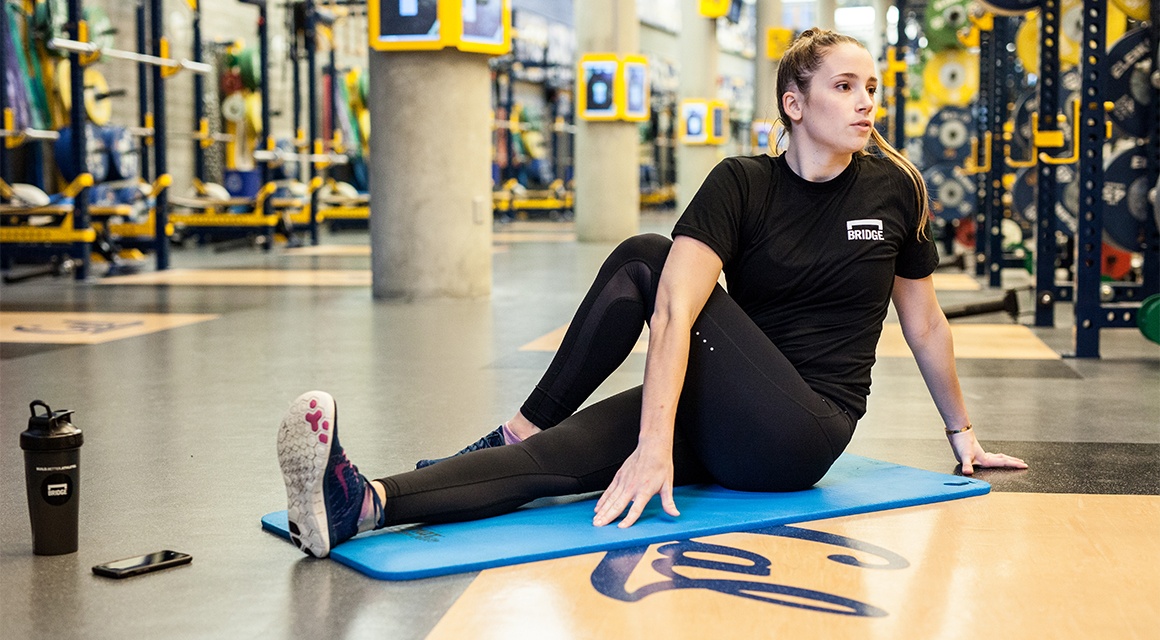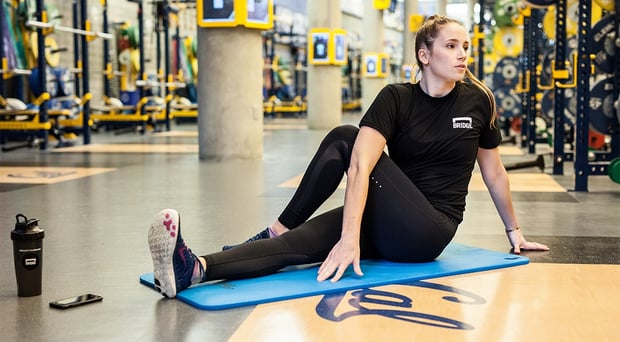Stretching Improves Athletic Performance and Health
Stretching can improve circulation, muscle flexibility, range of motion, and consequently, help athletes perform better in workouts and in competition. When exercising, muscles repeatedly flex and contract. Stretching causes muscles to lengthen and relax, resulting in the ability to maximize muscle engagement in the next workout. Stretching also boosts the body’s circulation by increasing blood flow throughout the body.
Better blood circulation will increase the supply of nutrients throughout the body and aid with the removal of harmful waste from the body’s muscle tissues, which can ultimately accelerate recovery time. Finally, joint range of motion can be improved with stretching as well. This increased range of motion enables athletes to perform more dynamic tasks and improve technique in sport-specific areas. No matter what exercise background athletes come from, stretching is a universal weapon that can increase athletic development, and one that many elite athletes have adapted into their daily workout regimens.
Here are a few tips to help optimize an athlete's stretching efforts:
Stretching should not hurt.
Athletes shoud stretch until they can feel it, and even a bit more, but not to the point of pain.
Breathe.
Athletes often get distracted when focusing on stretching, and end up holding their breath. Athletes should continue to breathe steadily and deeply, allowing their muscles to relax, and attempt to stretch further than they did the day before.
No bouncing.
Stretching is a steady process. Unlike other forms of exercise it is gauged in seconds, not repetitions. Move smoothly and avoid any pulsing movements.
To make stretching more interactive athletes can simply add a stability ball, or a foam roller. Ball stretching can involve lying on one’s back with arms out to the sides to stretch your chest, placing the ball under the lower back to stretch your abs, and curling your body around the ball (stomach down) to release your lower back. If you can’t touch your toes yet, use an elastic band around your feet with either end of the band in your hands to make up the difference. Foam rolling is another great way for athletes to release muscle tension, and speed up the recovery process. For more information on foam rolling the benefits can be found here.
Recap
Athletes that incorporate stretching into their daily routine experience numerous benefits related to performance. Improved circulation, flexibility, and increased range of motion all aid in muscle recovery, therefore, better preparing you for your next workout. When utilized on a consistent basis, stretching improves overall health and greatly assists in recovery, which directly affects the level in which an athlete can train and compete.
Check out another Bridge post on stretching the Benefits of Stretching Beyond your Training.
References:
1. http://www.fitday.com/fitness-artices/fitness/stretching/5-benefits
2. http://life.gaiam.com/article/how-does-stretching-benefit-my-carido-workout
Related Posts

The Best Bench Press Variation You’re...
This post is part of our Coaches Corner series with Taylor Rimmer. Taylor is NSCA-CPT, StrongFirst...

Does Powerlifting Harm Heart Health?
A recent study has discovered that a 12-week supervised strength training program (SSTP) may result...
-1.png)
Barefoot Running: Is It For You? |...
Run Free: Consider Less Cushion
Updated October 2020:
With more athletes looking for ways to...




